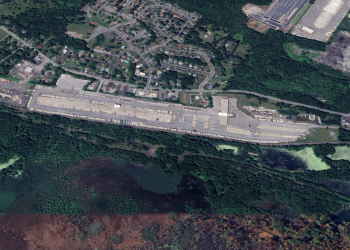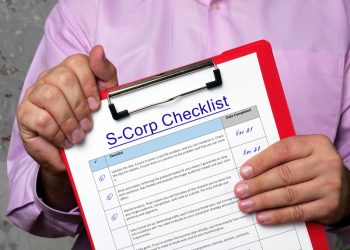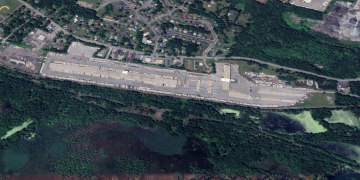
It”™s a hot construction market that has IVI International Inc. consulting this summer on more than 400 projects across the country that represent about $20 billion of investment. Demand for the Westchester County company”™s construction risk management, due diligence and other consulting services to the industry”™s lending institutions and equity investors is putting the squeeze on its 10,000-square-foot headquarters at 55 W. Red Oak Lane on the Platinum Mile in Harrison.
With more than 40 employees hired in the last six months ”“ some of whom were laid off at IVI in the frigid construction market of the Great Recession ”“ the company has leased an additional 5,000 square feet of space in the nearby U.S. Tennis Association headquarters building at 70 W. Red Oak Lane. IVI, which also has seven regional offices in major cities nationwide, is deploying some of its Westchester workforce to 4 W. Red Oak Lane, where it is newly leasing an additional 4,700 square feet for its operations.
“We need one 20,000-square-foot floor,” said Carl de Stefanis, a professional engineer and CEO of IVI International, whose second-generation business has profitably ridden the up-and-down cycles of the construction industry for four decades. “The problem is that we own the building here. We vacate the building, we can”™t get any tenants here” in Westchester”™s sluggish and shrunken commercial office market. “In times of growth, it”™s been an issue.”
This latest growth spurt has been driven by a resurgence in construction that began 2 to 2 1/2 years ago, said Robert Barone, an architect and IVI”™s first-year president who led its construction risk management services division for 15 years. “The most active city, the most active market right now is New York City, without a doubt,” he said.
Since January 2013, IVI has worked with clients financing 175 construction projects worth more than $12 billion in the five boroughs, Barone said. About 70 percent of the firm”™s New York City work is on housing projects, while hospitality developments account for about 15 percent.
In New York, where exorbitant land costs deter investment in affordable and market-rate housing projects, developers are building “super-luxury” residences, Barone noted. Among its city projects, IVI is overseeing project management for lenders at One57, a 90-story condominium tower under construction in midtown Manhattan; 56 Leonard St., a 60-story condo building rising in Tribeca; and 42 Park Avenue, another luxury condo development that will be the third-tallest building in the U.S. and one of the tallest residential towers in the world when completed next year.
Barone said IVI is also consulting on the Hudson Yards platform construction that began this year on the city”™s West Side and on Forest City Ratner”™s modular apartment building construction at its Atlantic Yards mixed-use development in Brooklyn. IVI”™s past projects in the city include the $860 million Time Warner Center and that retail mecca”™s Columbus Circle neighbor, 15 Central Park West, a $950 million condominium development.
While New York City is leading the heated market, other metropolitan centers have seen increased construction activity too. “Washington, D.C., has also been strong with the government there,” Barone said, an IVI employee for 30 years. “We”™re seeing Chicago, Boston and Miami are taking off.”
“They”™re taking off so fast that the resources cannot meet the demand,” he said. “The ramp-up has been so quick that every design and construction firm out there is having trouble in meeting the needs.”
With demand outpacing available resources, construction costs are rising ”“ by about 5 percent, Barone said. “We”™re seeing construction costs in excess of $800 a foot now on some of the bigger buildings,” he said.
With rising costs, more developers in New York City are hiring nonunion labor for projects, Barone said. “The nonunion factor has really grown just because of the lower costs” for labor, he said. “We”™re seeing a lot of projects being built nonunion that would never have been built nonunion seven to 10 years ago.”
Developers are also less likely to negotiate project labor agreements with building trades unions in the more active market, Barone noted. “The trend is getting away from PLAs because unions are not willing to make the concessions they were willing to make before,” he said. For a developer, “Getting a PLA now is not as beneficial as it was three or four years ago.”
Barone said IVI”™s construction risk management business peaked in the industry”™s boom years of 2003 through 2007. But the company saw business drop off in the credit crisis and Great Recession that followed that development boom.
“We went from 195 people to 80 people,” de Stefanis said.
“The nice thing is, we were able to bring most of them back,” said Linda Bryson, an IVI principal and 37-year employee of the company. The company is back up to 170 employees nationwide, she said, including 75 architects and engineers at its Westchester headquarters.
“We”™ve seen a lot of cycles” in real estate development and financing, said de Stefanis, whose father, Tancredi M. de Stefanis, started the construction risk consultancy, Inspection & Valuation International, in 1973 as an addition to his commercial design-build business in Westchester. “We”™re very much on the forefront and able to see where things are going.”
“With the diversity of services here, when one thing goes down, something else picks up,” de Stefanis said. In the last recession, equity investors and lenders ”“ most of the company”™s clients are U.S. banks ”“ still retained IVI for environmental assessments, due diligence work and other transactional support services. Currently the company”™s advisory services in construction cost recovery and its environmental consulting division for wireless telecommunications infrastructure development are “very busy,” he said.
“Even in the depths of the recession, there were gaming projects being built,” Barone said. “We”™ve done a significant amount of gaming around the country,” including Empire City Casino at Yonkers Raceway and the $8.5 billion, 18 million-square-foot City Center Resort and Casino in Las Vegas.
“We”™re growing,” de Stefanis said. “We”™re profitable. We”™ve given a lot of thought to diversity of services and as a result, we”™ve never lost money. We”™ve never had a year where we operated at a loss.” The company is on target for $38 million in gross revenue this year, he said.
Having consulted on several thousand projects nationwide in IVI”™s 41-year history, “We get a sense when the markets are overheated,” de Stefanis said. The CEO suggested the hot construction market could be turning that way.
“If we”™re not at the top, we”™re pretty close to the top” of that market, he said.
“It”™s not slowing down,” Barone said. “The rate of work coming in on construction ”“ we”™ve had two years where we”™re plus 30, 35 percent.”
“It”™s surprised our clients too,” Barone said. “Nobody saw this coming. Everybody just wants to be a part of it.” Most of IVI”™s banking clients have increased their lending goals for this year from 2013, he said.
Where is the industry headed?
“The jury”™s out,” Barone said. “It feels like things are too heady. ”¦ It”™s not clear how long this is going to continue. There are many dynamics that are going to affect it.”
“Things are going fantastic,” said de Stefanis. “How much longer this party is going to go, I don”™t know.”
















